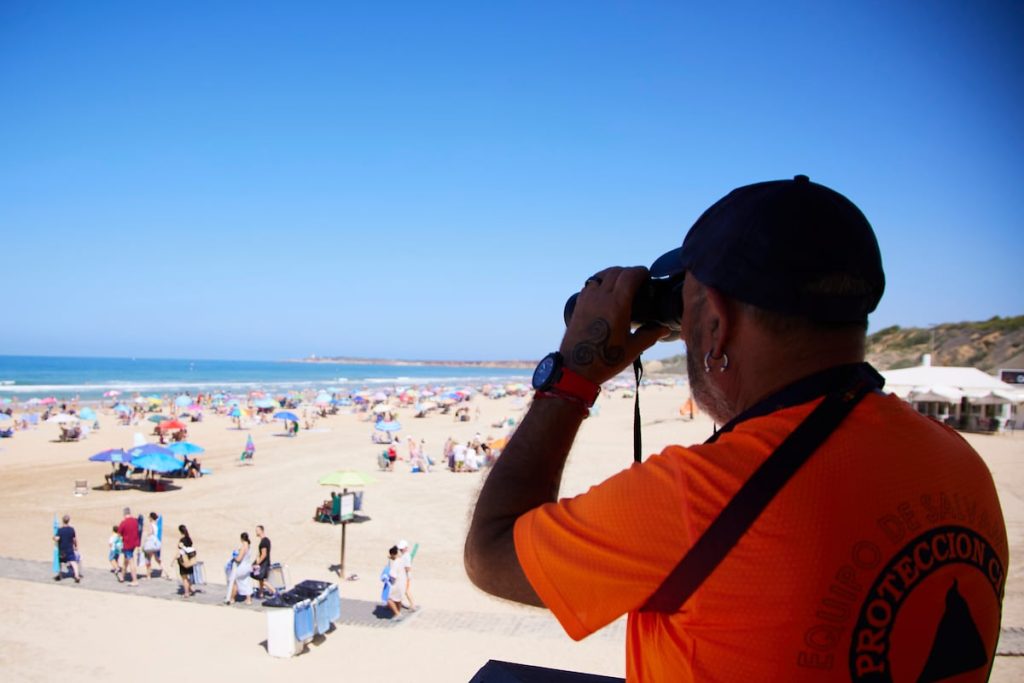A total of 36 people drowned in bodies of water in Galicia in the first six months of this year. This number nearly doubles the figure for the same period of time in 2023 and surpasses the total of fatalities for the same cause in Asturias, Cantabria, Basque Country, Balearic Islands, and Murcia. Galicia now leads Spain in this sad statistic, followed by Andalusia (32) and Valencia (27). Despite having the most beaches (987) and kilometers of coastline (1,659), neither authorities nor experts consulted can find a clear reason for this increase in drownings. They do highlight that most deaths occurred in unguarded areas such as reservoirs and rivers, areas where Galicia also stands out due to its 10,000 waterways. In Spain, as of July 1st, 198 people have drowned. Almost 85% are men and just over half of the accidents occurred on beaches.
Nuria Rodríguez, president of the Federation of Rescue and Lifesaving of Galicia, explains that the data from the National Drowning Report compiled by the Royal Spanish Lifesaving Federation since 2015 is extracted from information collected in the media, as it is the only source available to the entity. The statistics do not only include deaths of bathers in the sea and rivers, but also accidents involving fishermen or shellfish gatherers, for example. She is surprised by the increase in Galicia, especially in a year where bad weather has delayed the beach season. “Lifeguards are getting bored,” she says about the lack of sunny days on the Galician coast this summer. Rodríguez has analyzed the news from which the statistics are derived and highlights that many drownings occurred in unguarded rivers and reservoirs. Until April, many deaths were suicides, she claims.
On July 2nd, two men drowned in the Miño River, due to the increased flow caused by heavy rains this year. One of the victims was bathing in the recreational area of Ponte Mourulle when he suddenly sank. The other was fishing, dropped his fishing rod, and disappeared trying to grab it. Both bodies were found the following day in the Belesar reservoir. Benjamín García, deputy mayor of the Municipality of O Páramo (Lugo), where the fisherman lost his life, explains that it is “very difficult” to provide surveillance because there are numerous bathing areas, one for each access path to the river. He believes that behind these drownings there are often other causes that are not reflected in the statistics. The deceased in his municipality knew how to swim, while his companion did not; and yet, he entered the water to rescue him and managed to come out safely. “I think something must have happened to him,” the councilor suggests.
In beaches with lifeguards, the Galician rescue federation demands that municipalities hire these workers in June, not just in July and August. This profession faces labor shortages, admits Rodríguez. In 2023, the Xunta approved a decree to reduce the requirements to become a lifeguard due to municipalities’ difficulties in finding workers. However, the Galician Federation of Municipalities and Provinces (Fegamp) complains that neither this measure nor the subsidies provided by the Xunta for these hirings have solved the problems of finding candidates, motivated by the short work season and low wages. The late publication of the aids (this year they were released on May 31st), for which Galician mayors also request an increase in funds.
With nearly a thousand kilometers of coastline and over 500 beaches, as well as pools, lakes, reservoirs, and rivers, in Andalusia, the chances of drownings also multiply. There have been 32 deaths from drowning reported until June and another 4 in July, half of the total for 2023. “The main cause is the lack of prevention culture; we are not aware that the aquatic environment is not our natural habitat; we associate it with leisure and therefore think it cannot be dangerous,” explains José Antonio Santana, Head of the Beach Unit in Cádiz for the Red Cross, about the main reasons behind these figures. There is no specific profile, but Santana’s experience shows that on guarded beaches, drownings are usually among people aged between 50 and 60. In unguarded areas such as beaches without lifeguards, reservoirs or lakes, deaths occur more often among young people. Prevention is the key, emphasizes this “lifeguard”.
The Valencian Community is seeing some of the worst drowning records since 2015, when the Spanish lifeguard federation began collecting data on water-related deaths. With four deaths on beaches in Valencia and Castellón the past weekend, the community has surpassed 500 cases in less than a decade, 15% of the national total. In June alone, 17 bodies were recovered from beaches and rivers, the highest number in Spain, rising to 27 if all incidents from the first half of the year are included. Most of these deaths occurred at the beginning of June, during a Levante storm along the Alicante coast that generated strong underwater currents, known as rip currents, difficult for swimmers to notice. Within just ten days, drownings occurred along the entire coast of Alicante, from north to south, without distinction between open beaches, urban areas, or rocky coves, when some municipalities had not yet activated their rescue services.


